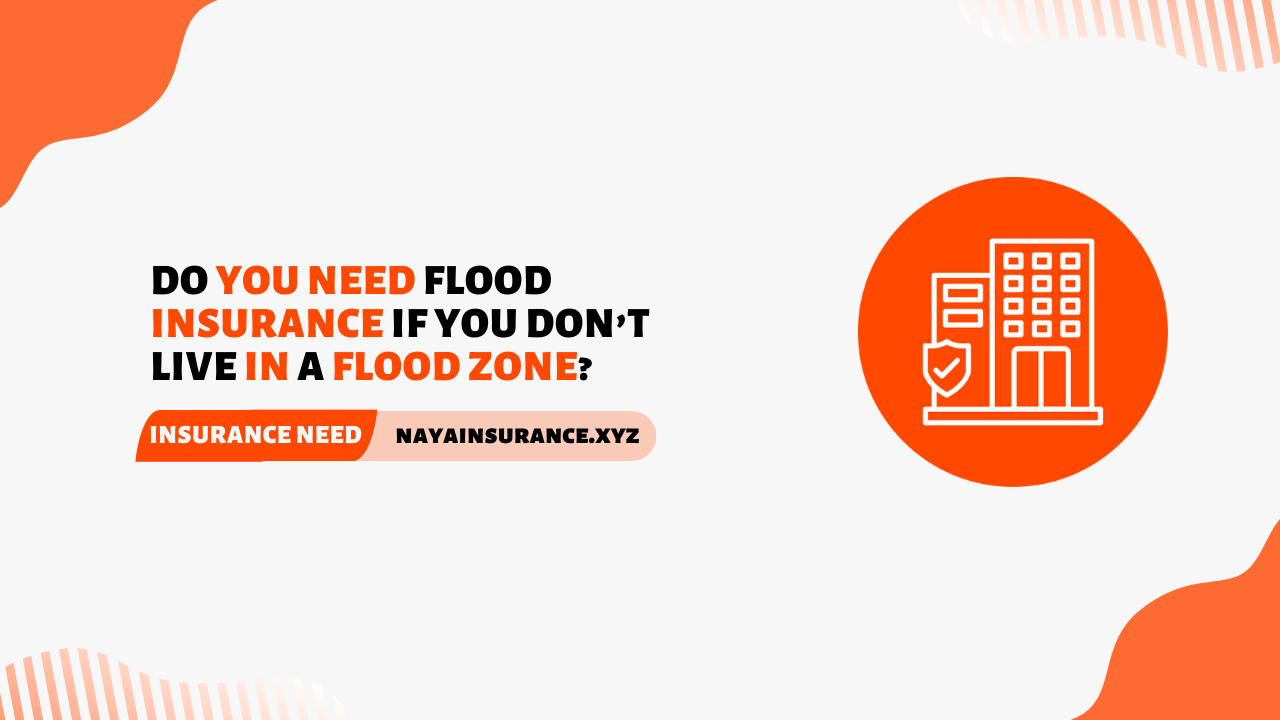Floods can be devastating. They can turn your life upside down, leaving you with financial stress, ruined belongings, and countless repairs. You might think flood insurance is only for people living in flood zones, but is that really true?
Let’s dive in and find out why flood insurance might still be worth considering—even if you’re not in a designated flood zone.
Understanding Flood Zones
What Is Flood Insurance?
Flood insurance is a special type of coverage that protects your property and belongings from damage caused by floods. Unlike regular homeowner’s insurance, it specifically covers flood-related incidents, such as rising water or overflowing rivers.
Who Needs Flood Insurance?
While it’s mandatory for properties in high-risk flood zones to have flood insurance, anyone can purchase it. Many people outside flood zones assume they’re safe, but floods don’t always follow maps.
Understanding Flood Zones
What Are Flood Zones?
Flood zones are areas classified based on their likelihood of flooding. High-risk zones (like those near rivers or coastal areas) are marked as “Special Flood Hazard Areas (SFHAs).” Others are labeled as moderate or low risk.
How Are Flood Zones Determined?
The Federal Emergency Management Agency (FEMA) uses historical data, topography, and weather patterns to map flood zones. However, these maps can’t predict every scenario.
Common Myths About Flood Zones
- Myth: “If I’m not in a flood zone, I’m safe.”
- Reality: Flooding can occur anywhere. About 25% of flood claims come from low- or moderate-risk areas.
- Myth: “Flood insurance is too expensive.”
- Reality: Policies in low-risk areas are often very affordable.
Reasons to Consider Flood Insurance Outside Flood Zones
Changing Weather Patterns
Climate change has made weather unpredictable. Areas that never flooded before might suddenly experience heavy rainfall, hurricanes, or flash floods.
Unexpected Flood Risks
Floods aren’t always caused by rivers or oceans. Urban areas with poor drainage, broken water systems, or excessive rain can experience sudden flooding.
Real-Life Examples of Flooding in Non-Flood Zones
In 2021, severe flooding hit areas in Tennessee that weren’t even classified as flood zones. Residents were caught off guard, and many faced massive repair bills because they lacked insurance.
The Financial Impact of Flooding
Cost of Flood Damage Without Insurance
Even a few inches of water can cause thousands of dollars in damage. Replacing flooring, furniture, and electrical systems adds up quickly.
Comparing Flood Insurance Costs to Repair Expenses
Flood insurance in low-risk areas can cost as little as $300 a year. Compare that to potential repair costs, which can easily exceed $20,000 after a small flood.
Flood Insurance Basics
What Does Flood Insurance Cover?
Flood insurance typically covers:
- Structural damage to your home
- Electrical and plumbing systems
- Built-in appliances
- Personal belongings, like furniture and electronics
How Much Does It Typically Cost?
The cost depends on your location, coverage limits, and risk level. In low-risk zones, premiums are usually more affordable.
How to Decide if Flood Insurance Is Right for You
Evaluating Your Risk
Ask yourself:
- Is my area prone to heavy rainfall?
- Have nearby areas experienced flooding?
- Does my property have good drainage?
Benefits of Peace of Mind
Even if the risk is low, having flood insurance ensures you’re covered. It’s like wearing a seatbelt—not always needed, but invaluable when it is.
Tips for Finding Affordable Flood Insurance
- Shop around and compare policies.
- Check if you qualify for FEMA’s National Flood Insurance Program (NFIP).
- Ask about discounts for low-risk areas.
Conclusion
Flood insurance isn’t just for people in flood zones. Weather is unpredictable, and floods can happen anywhere. By investing in a policy, you protect your home, your finances, and your peace of mind. So, is flood insurance worth it? Absolutely—because it’s better to be safe than sorry.

